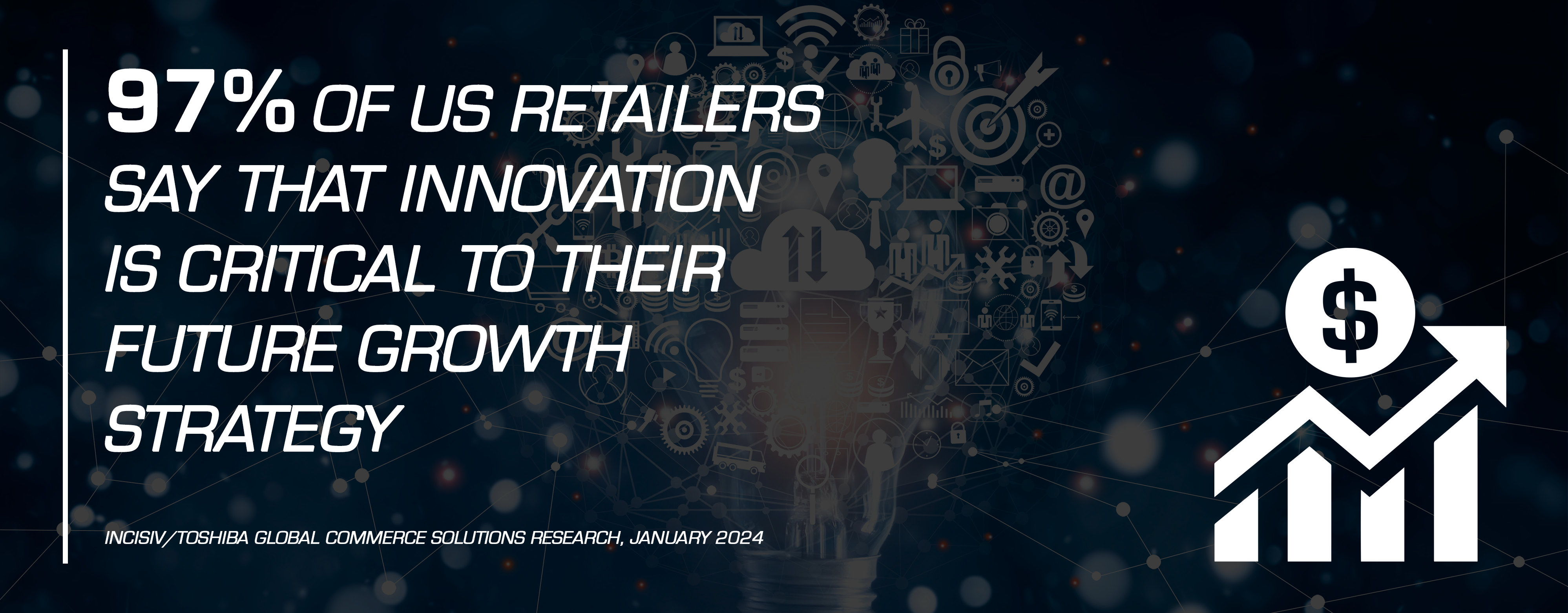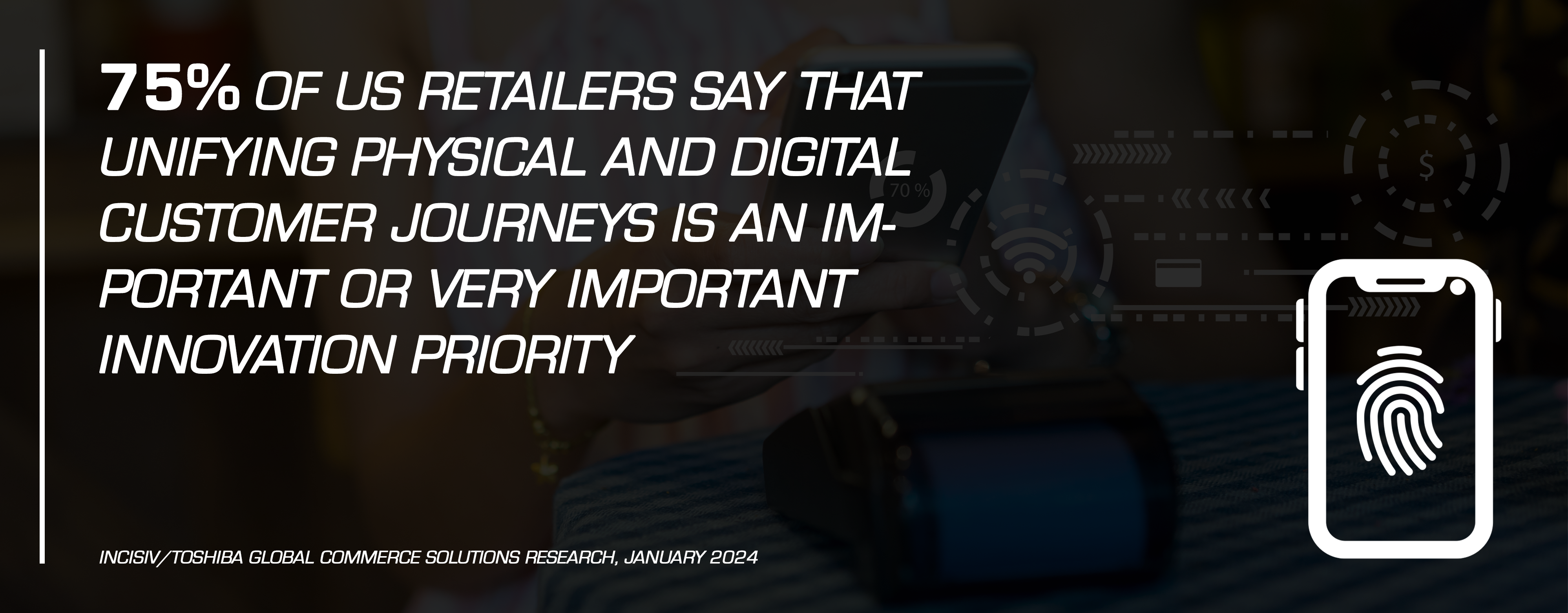In retail, the pursuit of innovation has become synonymous with survival and growth. A staggering 97% of retailers recognize innovation's pivotal role in shaping their future. However, a concerning revelation surfaces when examining the statistics – a mere 22% of U.S. retailers and 18% in Latin America have dedicated teams specifically focused on innovation. But why?
We've partnered with Incisiv again this year to produce the 2024 State of the Industry: Innovation report highlighting innovation's role in determining retail success. We've pulled three of the biggest revelations from the report and what each one means for retailers.
1. The Stalemate Between Idea and Execution of Innovation Plans
While the majority of retailers express the importance of innovation, many find themselves in a challenging position, lacking a clear execution plan. It's not just about acknowledging the significance of innovation; it's about translating that recognition into actionable strategies. The absence of dedicated innovation teams raises questions about the industry's readiness to navigate the complex landscape of emerging technologies, consumer expectations, and market dynamics. Without a structured approach to execution, retailers risk stagnation in a rapidly evolving environment.

To overcome this obstacle, retailers must foster a culture that encourages experimentation, risk-taking, and collaboration. That starts with leadership, as 56% of companies whose leadership is not committed to innovation face resource constraints that impede innovation efforts, compared to 29% of companies with leadership commitment to innovation. Establishing dedicated innovation is necessary to drive tangible outcomes and propel the industry forward.
2. The Rise of Artificial Intelligence
As the retail landscape becomes increasingly competitive, A.I. provides a solid competitive edge by enhancing operational efficiency, reducing costs, and delivering personalized experiences that resonate with consumers. Beyond being a buzzword, A.I. is becoming an integral part of business strategies.

Embracing A.I. is not just an option; it is a strategic imperative for retailers aiming to stay ahead of the curve. Retailers are actively leveraging A.I. to analyze large amounts of data, gaining invaluable insights into customer behavior, preferences, and emerging trends. But beyond data, retailers need to look for ways to integrate A.I. into their other operations. It is not just about incorporating new technologies; it is about strategically infusing A.I. to elevate customer experiences while gaining that needed competitive edge. This can look like several different things.
- Crafting personalized experiences through A.I.-driven recommendations based on customer data and specific segmentation
- Implementing chatbots to provide round-the-clock customer support, answering queries, and assisting with common issues
- Optimizing demand forecasting to proactively maintain optimal inventory levels and anticipate future demand patterns
- Using A.I. algorithms to detect unusual patterns and anomalies in transactions, helping to identify and prevent potentially fraudulent activities
By strategically incorporating A.I. into these areas, retailers can enhance their operational efficiency and provide a more personalized and seamless experience for their customers, ultimately positioning themselves at the forefront of innovation in an intensely competitive market.
3. Unifying Digital and Physical Experiences is Still a Priority
Creating a seamless, cross-channel experience remains a top priority in 2024 for retailers across the U.S. & Canada, and Latin America. Shoppers today expect consistency whether they are shopping online, in-store, or through a mobile app. This unification ensures a streamlined and dependable process and enables retailers to provide personalized interactions, tailoring recommendations and promotions based on an in-depth understanding of customer behaviors and preferences.
Beyond convenience, a unified experience minimizes the risk of disjointed interactions, mitigating frustration and encouraging brand loyalty. Successfully bridging the gap between the physical and digital channels allows retailers to create a comprehensive and immersive shopping environment that aligns seamlessly with the evolving expectations of the modern consumer, ultimately contributing to heightened customer satisfaction and competitiveness in the market.

Retailers need to invest in technologies that enable a unified experience, such as:
- Responsive E-Commerce Platforms: Ensure that online platforms reflect the same branding, product information, and promotions as in-store to maintain a cohesive brand image.
- Unified Customer Profiles: Provide personalized recommendations and promotions based on customer preferences, regardless of the channel through which they engage with the brand.
- Click and Collect Services: Ensure a smooth and efficient process for customers to pick up their online orders in-store, creating a convenient and integrated experience.
- In-Store Technology Integration: Enable technologies like mobile apps that provide additional product information, digital signage, and interactive displays.
The goal is to break down silos between online and offline channels, ensuring a positive experience for customers at every touch point.
Overall, the 2024 State of the Industry report illuminates the significance of innovation and the imperative need for actionable strategies, embracing A.I., and unifying digital and physical experiences. As the retail landscape evolves, these insights become not just considerations but essential elements for navigating the path forward in a rapidly changing environment.
**All statistics can be found in the 2024 State of the Industry: Innovation in Retail report.







